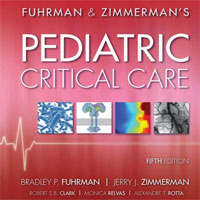Tag: pediatrics
PICU Outcomes and Outcome Predictions
Interview with Dr. Murray Pollack, the Director of Outcomes Research at the Children's National Medical Center and Professor of Pediatrics at the George Washington University School of Medicine. Severity of illness research... read more
Benzodiazepines and Development of Delirium in Critically Ill Children
Benzodiazepines are an independent and modifiable risk factor for development of delirium in critically ill children, even after carefully controlling for time-dependent covariates, with a dose-response effect. This temporal... read more
A Fundamentals Train-the-Trainer Approach to Building Pediatric Critical Care Expertise in the Developing World
Pediatric Fundamental Critical Care Support (PFCCS) is an educational tool for training non-intensivists, nurses, and critical care practitioners in diverse health-care settings to deal with the acute deterioration of pediatric... read more
Distributions and Behavior of Vital Signs in Critically Ill Children by Admission Diagnosis
This is the first study reporting distributions of continuously measured physiologic variables and trends in their behavior according to admission diagnosis in critically ill children. Differences detected between and within... read more
Conceptualizing Post Intensive Care Syndrome in Children
Post Intensive Care Syndrome in pediatrics (PICS-p) will help illuminate the phenomena of surviving childhood critical illness and guide outcomes measurement in the field. Empirical studies are now required to validate and... read more
Pediatric Critical Care, 5e
Still the #1 resource for today's pediatric ICU teams, the newly released Pediatric Critical Care, 5th Edition covers the entire field, from basic science to cutting-edge clinical applications. Drs. Bradley P. Fuhrman and... read more

Developing an ICU Diary in the Pediatric ICU
Todd Fraser, MD, speaks with Jenny Tcharmtchi, BSN, RN, CCRN, about the article, "Family Experience in the PICU," published in Critical Connections, the Society of Critical Care Medicine's newsletter. Ms. Tcharmtchi... read more
Disruption of the microbiota across multiple body sites in critically ill children
Microbiota in critically ill children differs sharply from the microbiota of healthy children and adults. Acknowledgement of dysbiosis associated with critical illness could provide opportunities to modulate the microbiota... read more
NIH awards $5.3 million to Montefiore team to study affect of chemicals in NICU
The grants will fund researchers' investigations into a broad range of environmental exposures that can impact children's long-term health.... read more
AAP Says Codeine Not Safe for Children, Urges Restrictions
Codeine is unsafe for children and should no longer be given to them, according to a new report from the American Academy of Pediatrics (AAP) .... read more
Language barriers impede treatment of children with special health care needs
Language barriers can have dangerous consequences for children with special health care needs, according to a new paper. Children with special health care needs account for two-thirds of pediatric hospital admissions and... read more









